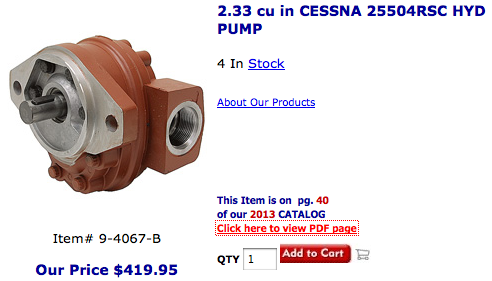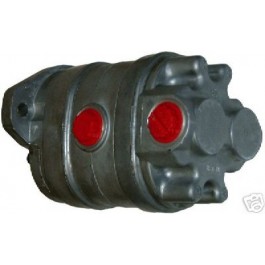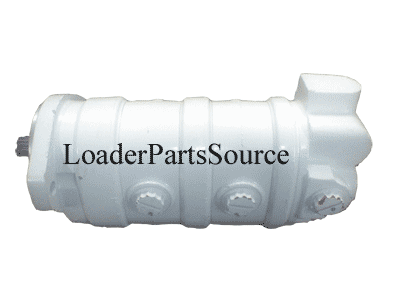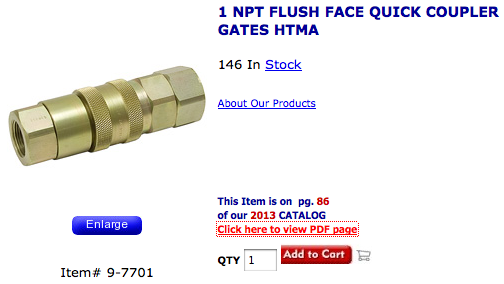Hydraulic Hose Sizing: Difference between revisions
Tom Griffing (talk | contribs) |
Tom Griffing (talk | contribs) No edit summary |
||
| Line 71: | Line 71: | ||
After some discussion with people who have operated the LifeTrac (the target machine for this power cube), there seems to be need for separating flow between right track, left track and the accessories (loader arms, etc). To this end, I found that typical skid steer equipment use triple or quadruple pumps and separate circuits for driven equipment. A little more digging turned up these double and triple pumps used on Bobcat equipment: | After some discussion with people who have operated the LifeTrac (the target machine for this power cube), there seems to be need for separating flow between right track, left track and the accessories (loader arms, etc). To this end, I found that typical skid steer equipment use triple or quadruple pumps and separate circuits for driven equipment. A little more digging turned up these double and triple pumps used on Bobcat equipment: | ||
{| class="wikitable" style="text-align: center;" | |||
! [[image:BobcatDoublePump.jpg]] | |||
! [[image:BobcatTriplePump.jpg]] | |||
|- | |||
|Bobcat Double Pump | |||
|Bobcat Double Pump | |||
} | |||
[[image:BobcatDoublePump.jpg]] | [[image:BobcatDoublePump.jpg]] | ||
Revision as of 01:47, 27 May 2013
Horsepower to Flow
First of all, we must determine fluid flow rate from the horsepower and pressure.
Horsepower = Pressure × Flow / 1714, or:
- Flow Rate (GPM): Q = (HP * 1714) / (P * 2)
- Note: SurplusCenter says for gas driven pumps, double the horsepower (or halve the flow rate for fixed hp).
- Pump Displacement (CIPR): D = Q * 231 / (RPM * 0.97)
- (CIPR = Cubic Inches Per Revolution)
| HP | RPM | PSI | Flow Formula | GPM | Displacement Formula | Displacement |
|---|---|---|---|---|---|---|
| 28 | 3600 | 3000 | (28 * 1714) / (3000 * 2) | 8 GPM | 8 * 231 / (3600 * 0.97) | 0.53 |
| 50 | 2700 | 3000 | (50 * 1714) / (3000 * 2) | 14.3 GPM | 14.3 * 231 / (2700 * 0.97) | 0.95 |
| 50 | 2700 | 2500 | (50 * 1714) / (2500 * 2) | 17.14 GPM | 17.14 * 231 / (2700 * 0.97) | 1.13 |
I haven't been satisfied with these numbers, as the displacement seems too small and would likely result in not enough flow. It is only an 18.6% increase in displacement even though the horsepower has doubled and the RPM is 25% lower.
In the past, the preferred power for the LifeTrac has employed ~54 horsepower @ 3600 RPM to drive two pumps, each about 0.92 cu in displacement. This has proven satisfactory and is the rule against which the new Power Cube will be measured. The total pump displacement was 1.84 CIPR (Cubic Inches Per Revolution). This gives a ratio of HP:Flow of 54:(1.84 * 3600).
For the new Power Cube, the engine will be producing between 50 and 60 hp @ 2700 RPM (the RPM yielding max torque). So, using the above ratio to derive the new displacement as follows for 50 and 60 HP:
54:(1.84 * 3600) = 50:(R * 2700) -or- R = 50 * 1.84 * 3600 / (54 * 2700) = 2.271 CIPR
54:(1.84 * 3600) = 60:(R * 2700) -or- R = 60 * 1.84 * 3600 / (54 * 2700) = 2.726 CIPR
So, this "rule of thumb" measurement puts the displacement at about 2.5 CIPR and 28.3 GPM flow:
2.5 * 0.97 * 2700 / 231 = 28.34
Pump Sizing
With all this in mind, in my first thought this is the closest pump I found:
After some discussion with people who have operated the LifeTrac (the target machine for this power cube), there seems to be need for separating flow between right track, left track and the accessories (loader arms, etc). To this end, I found that typical skid steer equipment use triple or quadruple pumps and separate circuits for driven equipment. A little more digging turned up these double and triple pumps used on Bobcat equipment:



